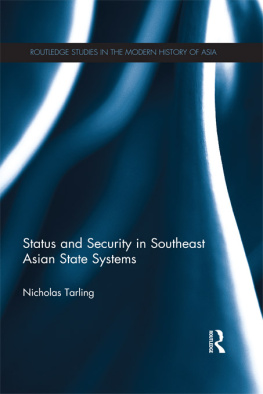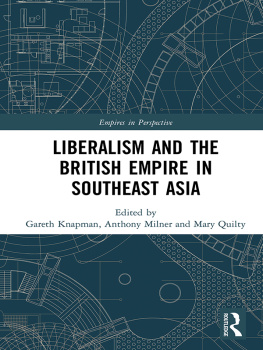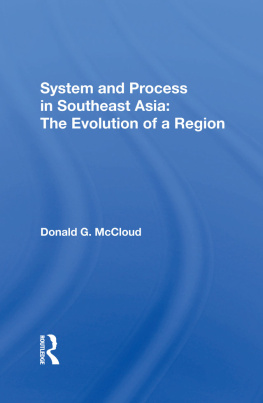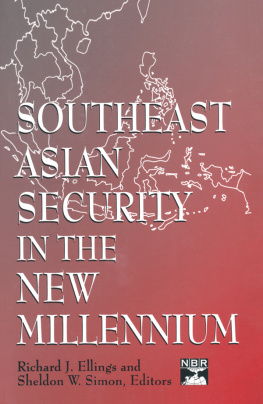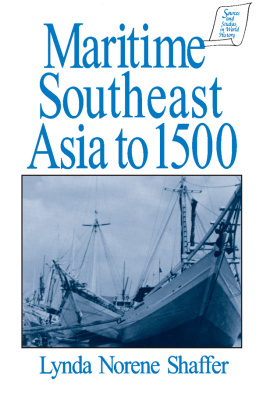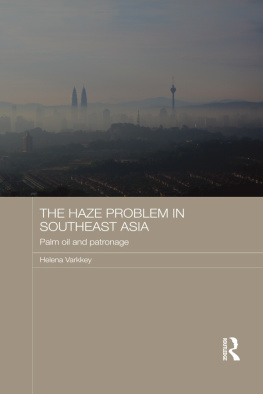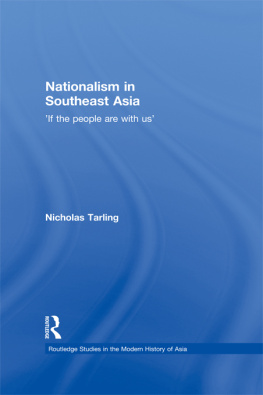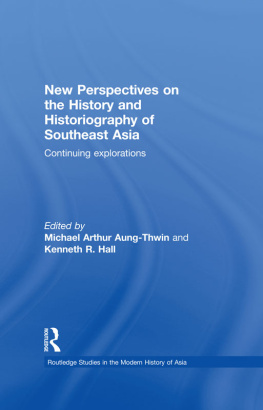ACKNOWLEDGMENTS
This book grew out of research supported by the generosity of numerous institutions. An International Pre-dissertation Fellowship Program award from the Social Science Research Council supported early intensive language study of Dutch, Sama, and Bugis. Research in archives and at field sites in Indonesia, kindly permitted by the Indonesian Institute of Sciences (LIPI), and archival research in the Netherlands and Great Britain, was jointly funded by the Social Science Research Councils International Dissertation Field Research Fellowship and a Fulbright-Hays Doctoral Dissertation Research Abroad Fellowship (P022A80050). Time dedicated to writing was generously provided by Cornell Universitys Society for the Humanities, and the Humanities Institute and Office of the Vice Provost for Research of the University at Buffalo (UB), State University of New York. Further assistance was provided by UB: its Gender Institute made possible additional field research in the summer of 2011; its Baldy Center for Law and Social Policy supported archival research during the summer of 2012; and its College of Arts and Sciences provided support through the Julian Park Publication Fund.
For providing access to their collections, I gratefully acknowledge the KITLV (Royal Netherlands Institute of Southeast Asian and Caribbean Studies), the National Archives of the Netherlands, the British Library, the Royal Asiatic Society, the Indonesian National Archives (ANRI) Jakarta and South Sulawesi Branches, and the Indonesian National Library. The staff at the National Archives of the Netherlands, who run a very tight ship indeed, graciously let me examine fragile seventeenth-century manuscripts that could not be brought out into the public viewing area.
A workshop sponsored by the Baldy Center for Law and Social Policy, a wonderfully interdisciplinary institution at UBs Law School, generated stimulating conversation and productive feedback on the book manuscript, thanks to the interest and generosity of Kerry Ward, Barbara Watson Andaya, and Eric Tagliacozzo, who went out of their way to offer extensive comments. I am also grateful for the participation and commentary of UB colleagues in this workshop: Jim Bono, Tom Burkman, Susan Cahn, David Engel, Roger Des Forges, Charles O. Frake, Walt Hakala, Hal Langfur, Adam Malka, Ndubueze Mbah, and Mateo Taussig-Rubbo.
One does not delve into seventeenth-century Dutch sources lightly, and the same may be said for Bugis-language manuscripts. This gratifying and enriching experience could not have been undertaken without the help of others. Thanks to Mathilda Knoop for archival assistance; Henrike Florusbosch for a native speakers ear; Ton Broos for weighing in on a particular passage; Martijna Briggs for helping to decipher and discuss many details of early modern Dutch; and Annabel Teh Gallop for guidance with royal seals, kitmir, and more in the British Library. For help with Spanish and other Iberian linguistic matters, for thinking in complex, evidence-based historical ways about language change, and for the sheer pleasure of intellectual engagement in flagrant disregard of disciplinary boundaries, I am grateful to Bruce Mannheim. Thanks also to John Wolff, who advocated for retaining the flavor of colloquial speech in translation, and for help with phonetics, sound shifts, and linguistic borrowing between Malay and European languages; as well as to Robert Blust for weighing in on loanwords in Malay and other Austronesian languages.
Henk Schulte Nordholt generously commented on the manuscript at different stages of its development. Philip Taylor offered helpful remarks at an early stage, as did Campbell Macknight, whose graciousness in having young scholars over for tea and cake to discuss their work is matched only by the depth and rigor of his interdisciplinary insights. Thanks also to Sirtjo Koolhof for sharing knowledge about Sulawesi, all things Bugis, and for great breaks from research in Makassar; Steve Druce for correspondence related to the earliest European sources on Sulawesi; Kathy Wellen for her interest in looking beyond the peninsula, her collegiality, and friendship; Wil Burghoorn for corresponding about family; Thomas Surez for communicating about early maps; and Valerio Valeri, who long ago urged me to return to Tom Pires. For their lively engagement through maritime conferences, talks, and emails, thanks to Kren Wigen, Michael Pearson, Marcus Rediker, Roy Ritchie, John Gillis, and Pierre-Yves Manguin. Charles O. Frakes work has been an inspiration and I treasure our get-togethers. The scholarly examples set by Janet Hoskins and by Ann Stoler have made a deep and lasting impression, for which I will always be grateful. Inestimable credit must also be given Ken George, who, in an offhand way, once remarked in an email, But above all, write the book that makes you happy. For vastly improving the books readability, and more, my thanks to Sarah E. M. Grossman and Fred Conner.
In Indonesia, Abdurrauf Tarimana (almarhum) and Mukhlis Paeni graciously sponsored periods of research. Muhamad Salim (almarhum) patiently sat with me day in and day out for months explaining Bugis grammar, discoursing on differences between dialects, and ironing out my errors. Kamaruddin Thamzibar did something similar with the Sama language. Kamaruddin was the person who first introduced me to his Sama kin, effectively placing me in the care of trusted relativesan experience that expanded like a snowball rolling down a hillside. His warm family always welcomed me, making me feel at home, and a better, truer friend in the world could not be found. Yohana Talabessy (almarhumah), who also took me in, on occasion lovingly scolded me for not staying with her even when there were laws against putting up foreigners. Collectively, her entire family was like a rock, especially Jeni Gamganora, who took her mothers maiden name, and who takes after her mother in so many ways, a woman of shining intelligence, warmth, and integrity amidst a sea, as her mother used to say, of all kinds. Among the others, too many to list, thanks go to Marhalim (almarhum), who inspired peoples respect and not fear; Tikungrahman for assistance during field research; the brave and gracious Hajjah Sitti Alwia and her daughter Erna; Haji Mansyur and Hajjah Sarwana in Tanjung Pinang; and on Pulau Balu, Nurhawana, who, along with Nuhba (Si Ce), first eased my socialization into Sama life, and always thereafter greeted me like a long-lost sister. Special thanks to Gebing, friend and steady captain, who looked after my safety at sea and on land; and Hatia, who could have been a captain, and who has, I am sure, always been game for much more than what life has thrown her way.
To the memory of my father, Dr. Arthur Gaynor, who literally healed hearts, and my mother, Dr. Evelyn Gaynor, scientist, artist, nurturer, who celebrated life. Also in memory of my maternal grandparents: Louis Chartoff, who, with his cornet, escaped impressment with the Russian Army (was it the red or the white?we never knew), and stowed away across the Black Sea to play a freer tune in a Turkish circus; and Rose Chartoff ne Klein, who, as a young girl playing in a tree, saw the Cossaks coming and warned her village, saving it. Their stories, within wider histories, bear the legacy of survival, memory, hope, and connection.


